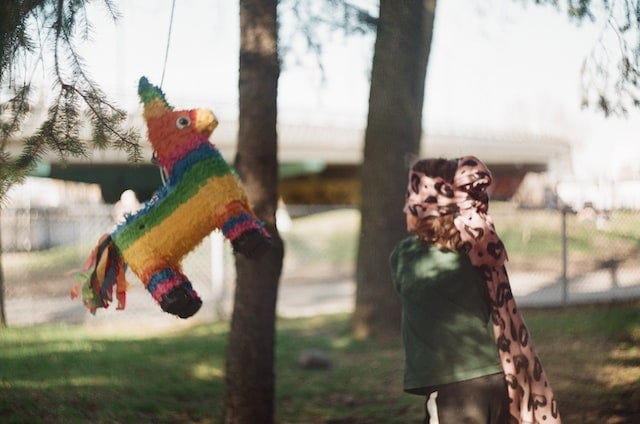How to Handle Hybrid-Remote
What to do with the contradicting advice.

The news around “returning to work” reminds me of the kids’ game of striking the piñata. The lucky player attempts to strike the paper mache figure filled with “prizes” using a wooden stick. And to make it fun and challenging, they do this blindfolded.
However, in the current game, we are all blindfolded, we are all swing sticks of decisions and policy, and the fragile figures represent our teams and organizations with the prize being that we keep delivering value and our colleagues are happy with the new way of working. We have to be careful not to cause damage to others in the field as we swing our way into this next new way of working.
To add to our “fun”, the news arrives fast and frequent about how or who is moving back to the office. I’ve been gathering up information but also digging into research and key developments. I’m putting that together for you and I’ll shift to weekly updates to help you sift through the noise.
Meanwhile, what does this mean for those of you trying to decide on next steps NOW? Here are some ideas to consider:
March and April of 2020 were forced transformations to fully virtual remote work. If you have experience in organizational change, you know this can always cause problems and in some cases organizational trauma. The fact that we see this on a global scale just helps to explain the confusing amount of noise on hybrid-remote work.
Many organizations plan to move back to the office this fall. Moving back to the office represents another transformation for your team or organization. The hope of moving back to normal is a false hope. The forced transformation of 2020 have put too many changes into motion. Some people are still recovering from 2020. Many people integrated their learning and see new possibilities. See some of my past writing on navigating change as to why this happens.
I always find large transformations work best if you iterate. This means you make smaller changes, gather feedback, decide what to keep and decide on next changes. This means you are prepared to experiment your way to the “new normal” because there are too many variables and dependencies to figure out at once. The best thing you can do would be to set favorable conditions for your team or organization to iterate to what works best for them. We see some organizations already making this move to iterate to their new way of working such as Capital One (going hybrid-remote) Dropbox (going remote-first), and Facebook (going remote-first). They chose not to make all the decisions for their employees and are giving them some choice.
So step carefully on the piñata field. Be aware of colleagues, partners, customers and what they swing for. Maybe you should tap before take a hard swing (iterate). Make sure that the move you make will take your team and organization in a helpful direction.
Hope this helps.
Mark
P.S. Can't make the events? Read my series on "Remote, Hybrid or Elsewhere" on Medium.
